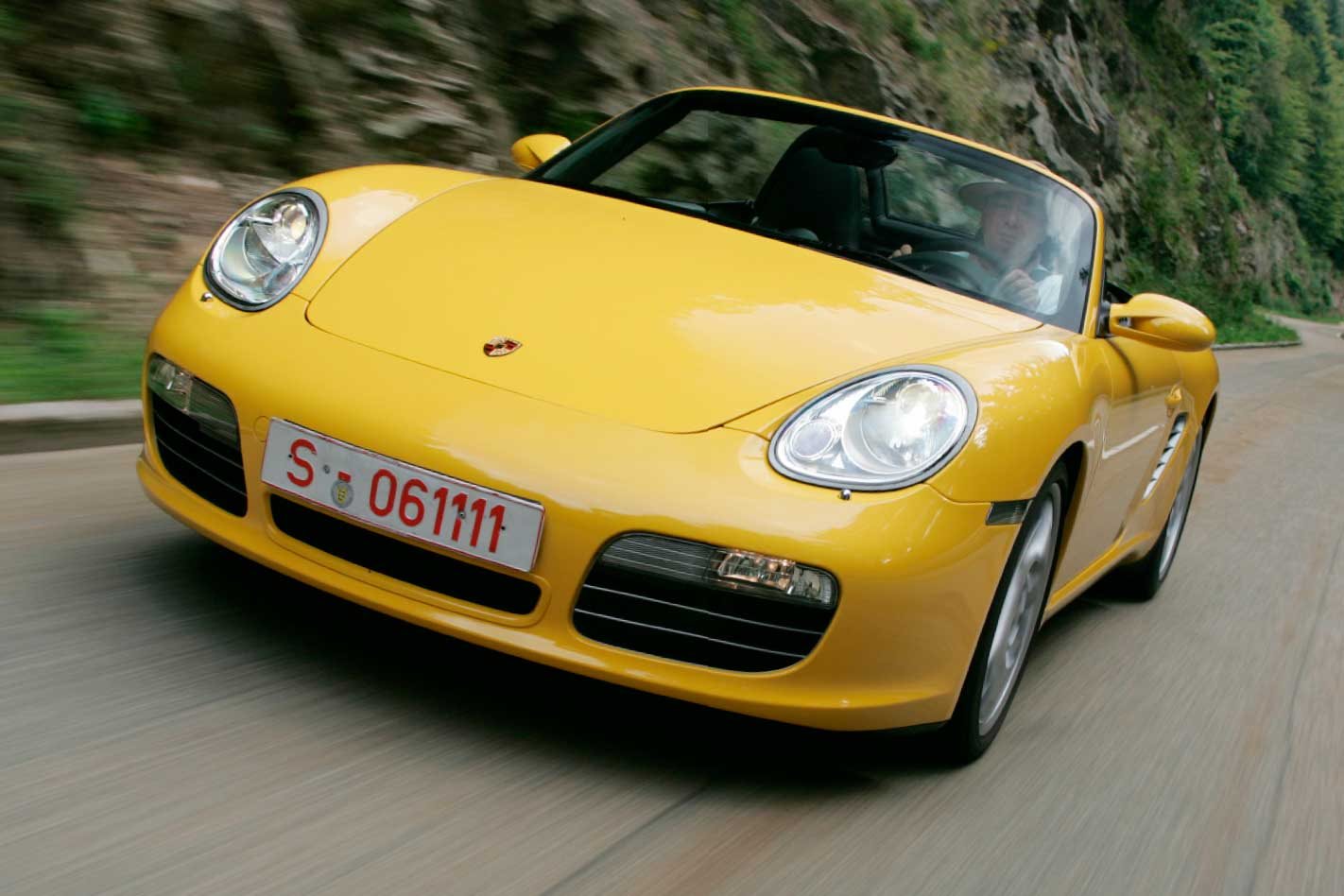The late Gerhard Mitter, who raced for the Swabian team in the 1960s, said there were three factors that made Porsche stand out from the rest. “The cars are extremely light, the engine sits close to the driven wheels, and the controls feel like extensions of the driver’s arms and legs.”
This feature was originally published in MOTOR’s December 2004 issue
Thirty-five years on, Mitter’s assessment still stands. And while the latest incarnation of the Boxster is above all else a festival of high-tech gadgetry, the iconic roadster still incorporates the brand’s trademark virtues: light weight, strong grip and intuitive controls.
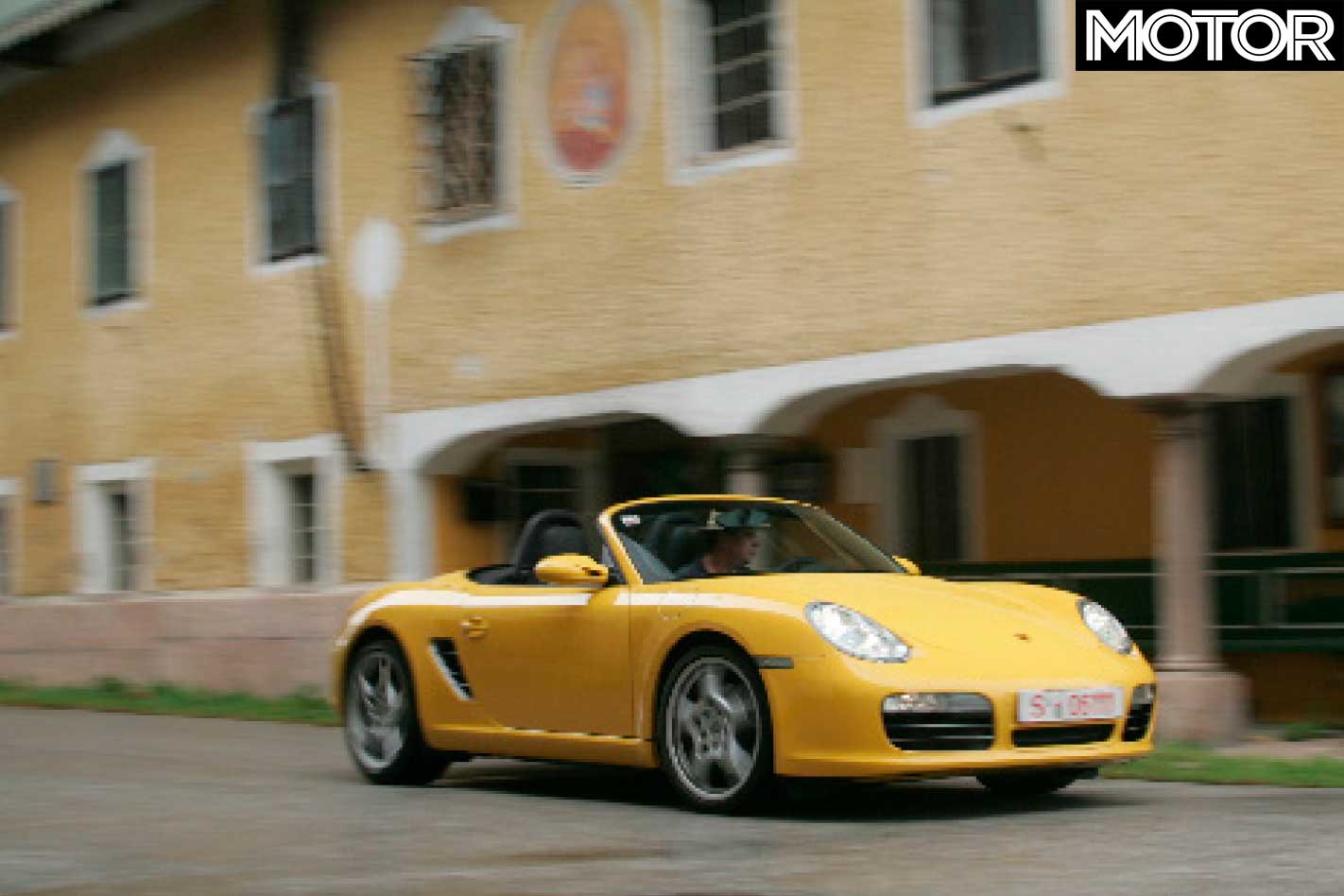
According to Porsche, the idea was to freshen up the Boxster without making its predecessor look old. And while the new Boxster borrows heavily from the 911, the goal was to grow the gap between the two.
The mildly flared wheel arches, to incorporate a wider track, give the car a more dynamic stance, the sculptured rear broadens at the shoulders and the revised front skirt, incorporating larger air intakes, borrows from the look of the 911 Turbo.
Inside, the Boxster S adopts the busy centre console from the 997 911 Carrera S. Bespoke items include the gearlever, a set of redesigned dials with sporty white faces for the Boxster S, chrome-rimmed circular air vents, as well as repositioned pedals and seats offering more head and legroom. The redesigned cockpit has brought the Boxster into line with the high-standard of design and quality of materials used in the new 911.
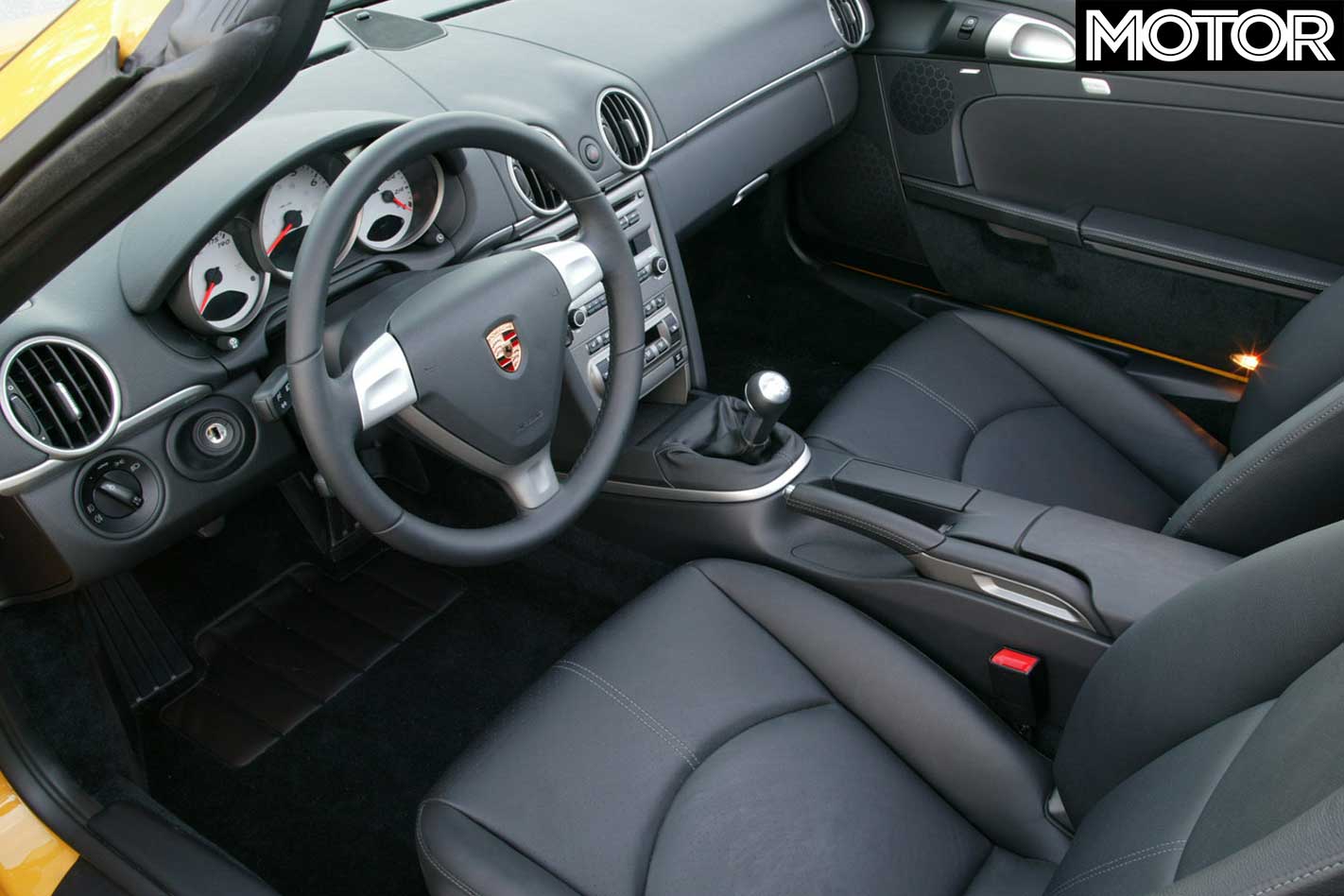
Part of the extreme Boxster makeover included making the driving position less cramped. The steering column adjusts in reach and height, the pedal box has been moved forward a fraction, the seat can be pushed further back and lower down, and is available with optional dynamic side bolsters for better lateral support.
To offset the good work done to the interior, and take away from the minimalist feel, Porsche designers have crammed more buttons, knobs, switches and monitors into the dash than there are on the control deck of Captain Kirk’s daily driver, the USS Enterprise.
It’s not all bad, though, and some of the more welcome innovations include a bigger glove box, a DVD-driven sat nav system, a re-engineered, power-operated roof with three, instead of two layers (as per the outgoing model) of fabric and a heated rear window, four side airbags (two in the doors, two in the seats), taller headrests and a more effective, transparent wind deflector.

Power output for the Boxster is pegged at 206kW, up from 191kW in the previous model, yet the difference is almost imperceptible. This hike in power helps the 2005 Boxster jog from 0-100km/h in 5.5 seconds, eclipsing the car it replaces by 0.2 seconds. Equally marginal, top speed has increased from 264km/h to 269km/h.
On paper, at least, there’s not much separating the 2005 Boxster and the outgoing model. But in terms of torque delivery and throttle response, the uprated 3.2-litre flat-six offers more urge, feedback and immediacy than the model it replaces.
Fitted with a new air-filter and a revised exhaust system, there’s a noticeable reduction in back pressure, and the two-stage intake plenum helps to boost low to mid-range torque as well as the Boxster’s willingness to rev. As a result, maximum torque of 320Nm, (up 10Nm from the previous model) is available between 4700rpm and 6000rpm. As per the outgoing model, peak power is made at 6200rpm.
And there is no better place to sample the full-volume symphony of a boxer engine than on a sweeping hill, where the intake rasp and the full exhaust roar roll along like the sound of distant thunder.
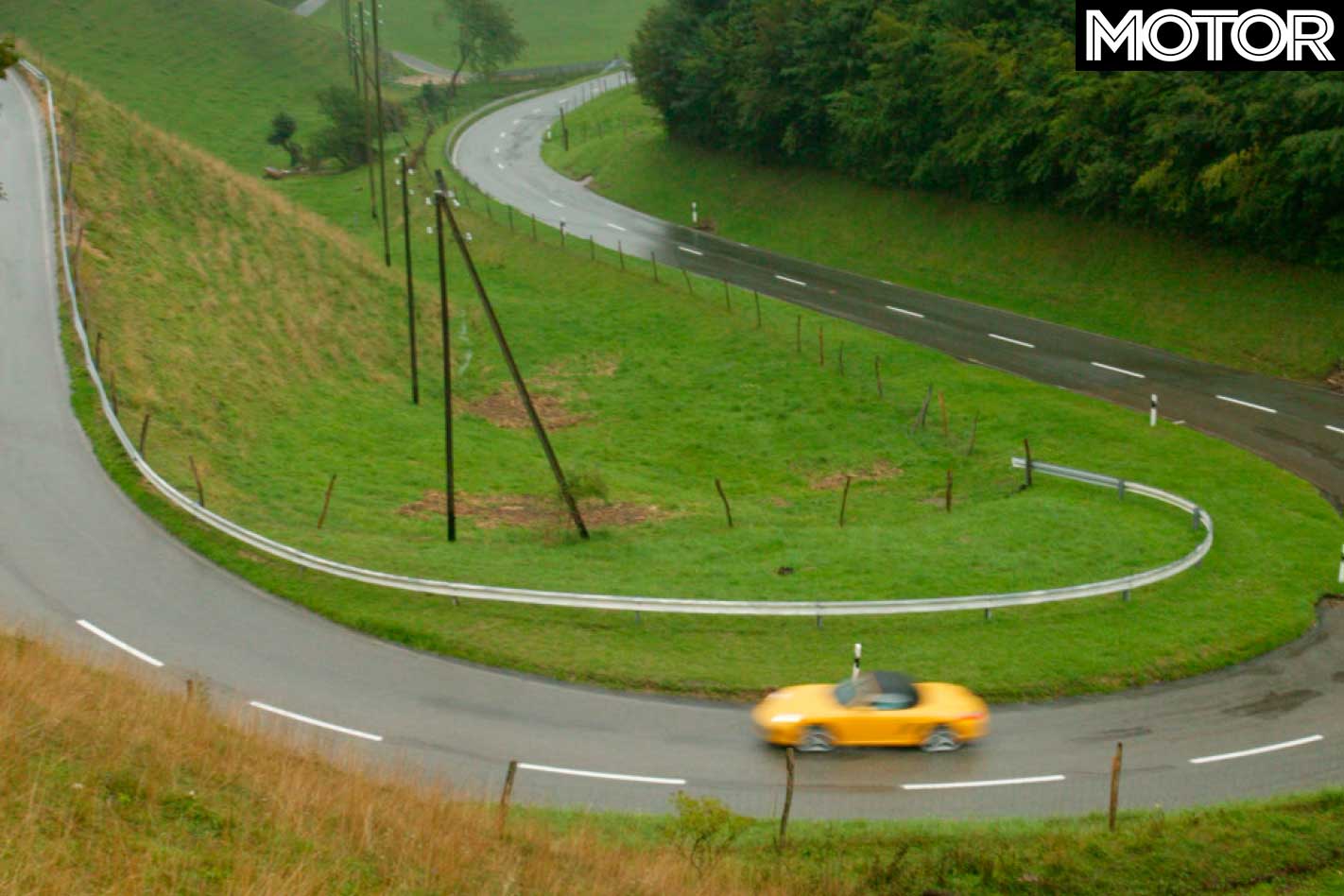
Despite perching on the optional 19-inch rims, the suspension tremble and the occasional front-end pitch we remember from last year’s Boxster, have all but disappeared. And at regular road speeds the Boxster is quite composed.
Who would have thought the usually rev-hungry 24-valver would happily lug up a hill in fourth without running out of breath? Only through hairpins does it beg for a lower ratio.
According to Porsche, the throws of the six-speed gearbox have been shortened by 15 percent. And while the shift action is lighter than before, there is room for improvement in terms of accuracy. The recalibrated steering becomes quicker and more accurate the more lock you wind on.
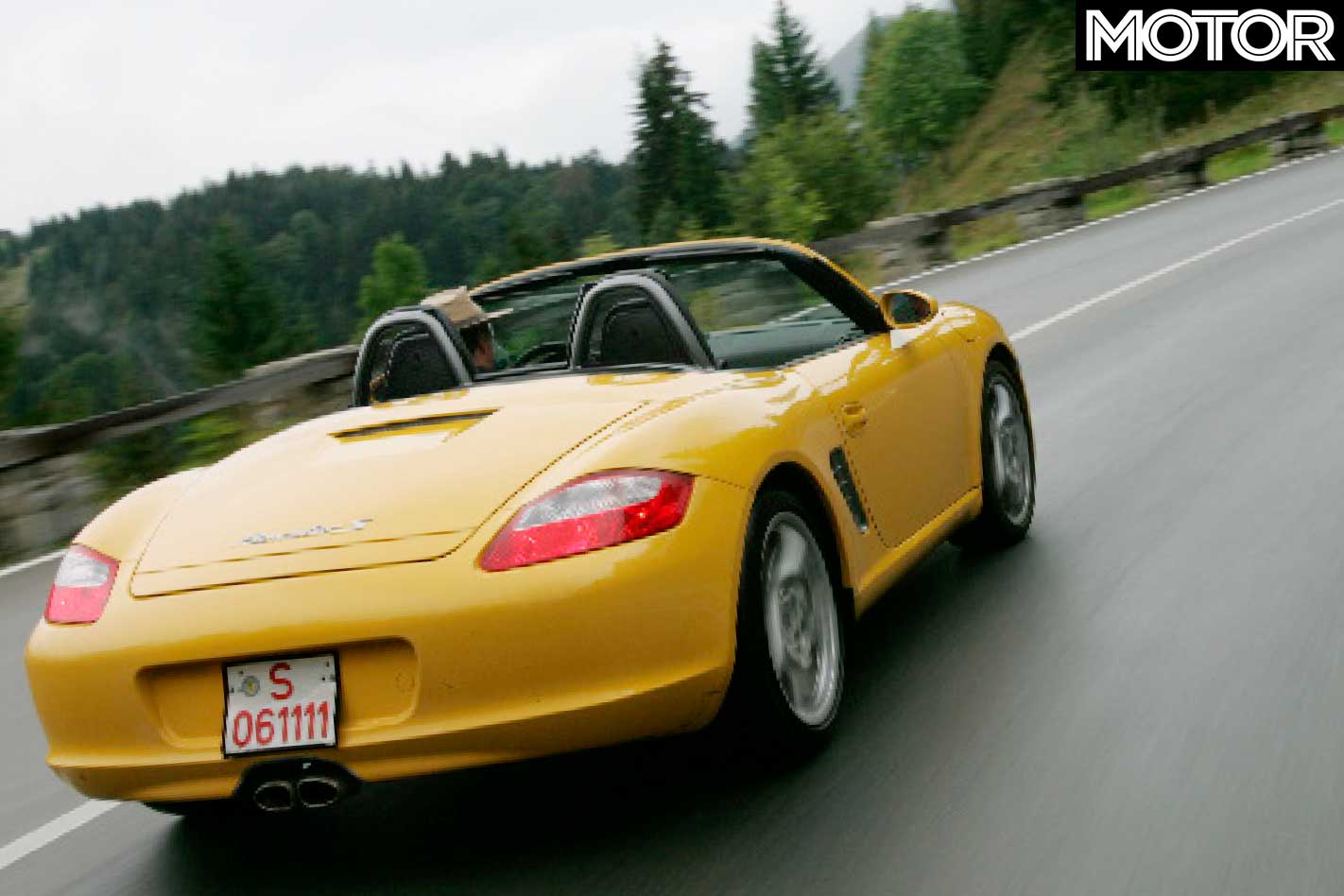
With Porsche Stability Management (PSM) standard, we recommend you tick the box for the optional Porsche Active Suspension Management (PASM). This allows the right amount of fun to be had without causing more ham-fisted drivers to make a mess of a corner.
Basically, PASM is able to adjust the suspension to suit the road and driving conditions. In Sport mode, every sense is on alert as the Boxster S turns from composed to angry, fighting every steering input, snapping at every imperfection in the road and pitching and yawing its way through uphill switchbacks.
Drop back into ordinary PASM mode, though, and the car becomes more composed, feeling more cooperative and stable. Along with PASM it’s worth opting for the Sport Chrono Package, which allows a more aggressive setting for PASM and PSM.
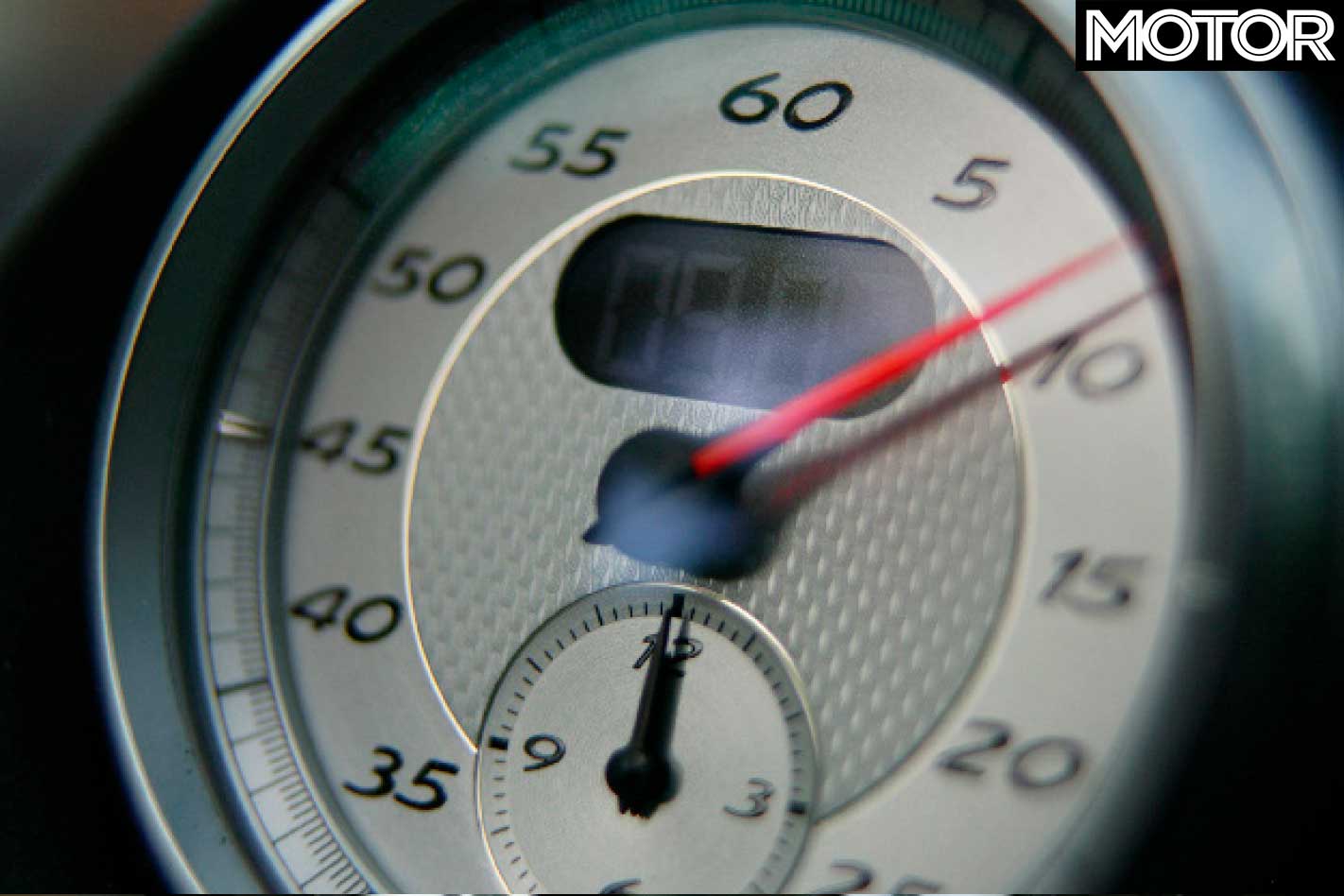
Through uphill twists and turns and on our less-than-perfect roads the 19-inch Michelins are more of a handicap than an asset, exaggerating understeer and promoting oversteer. However, on smoother sections one could feel the benefit of the wider track and the revised, lightweight suspension.
More rigid, and therefore more precise, with minimised camber changes and accurately defined toe-in tolerances, the new suspension geometry results in sure-footed roadholding, cornering grip and greater response to steering and throttle orders.
Although the optional 19-inch boots give the Boxster plenty of bling-appeal, they tramline more, and are less comfortable for daily driving duties than the standard 18-inch wheels, which are also more stable when driven at the limit.
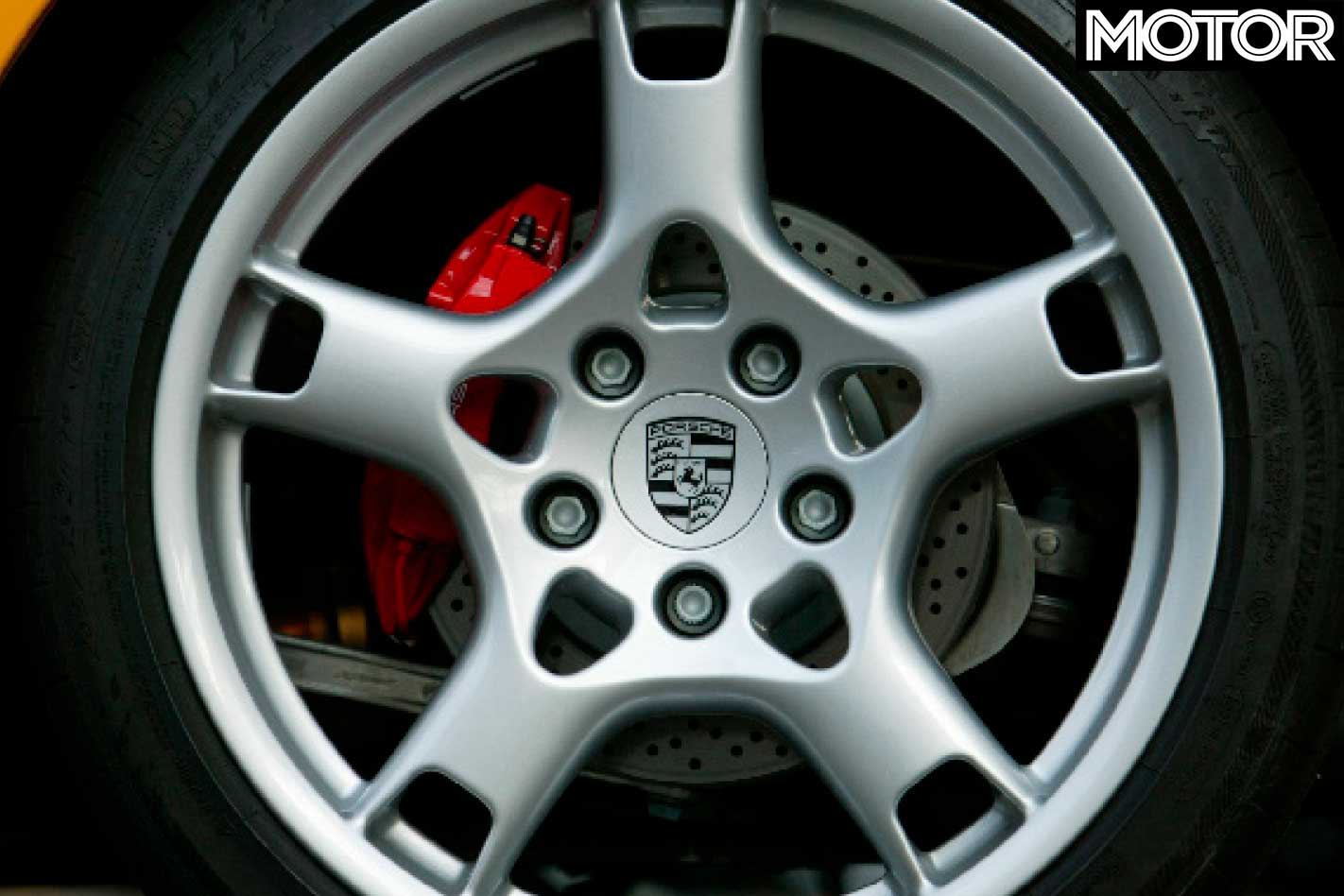
For everyday driving, the standard steel discs are sufficiently powerful and responsive enough. Now cross-drilled, and of a larger diameter in the rear, they are also quieter and less temperature-sensitive than the brakes on the previous model. Ceramic discs are now an option on Boxster S, but are not required unless you plan on lots of competitive driving.
Another option we can live without is the Tiptronic gearbox. It works well enough in manual mode but adds eight tenths of a second to the 0-100km/h dash, takes away 8km/h of top speed and affects fuel consumption.
Despite the wider body and the fatter wheels, which enlarge the Boxster’s frontal area, the drag efficiency figure has been pared down from 0.32 to 0.30. At the same time, axle lift has been reduced by 30 percent, thanks to a flush-fitting underside, ground-effect aprons and a lot of wind tunnel work aimed at improving directional stability at high speed.
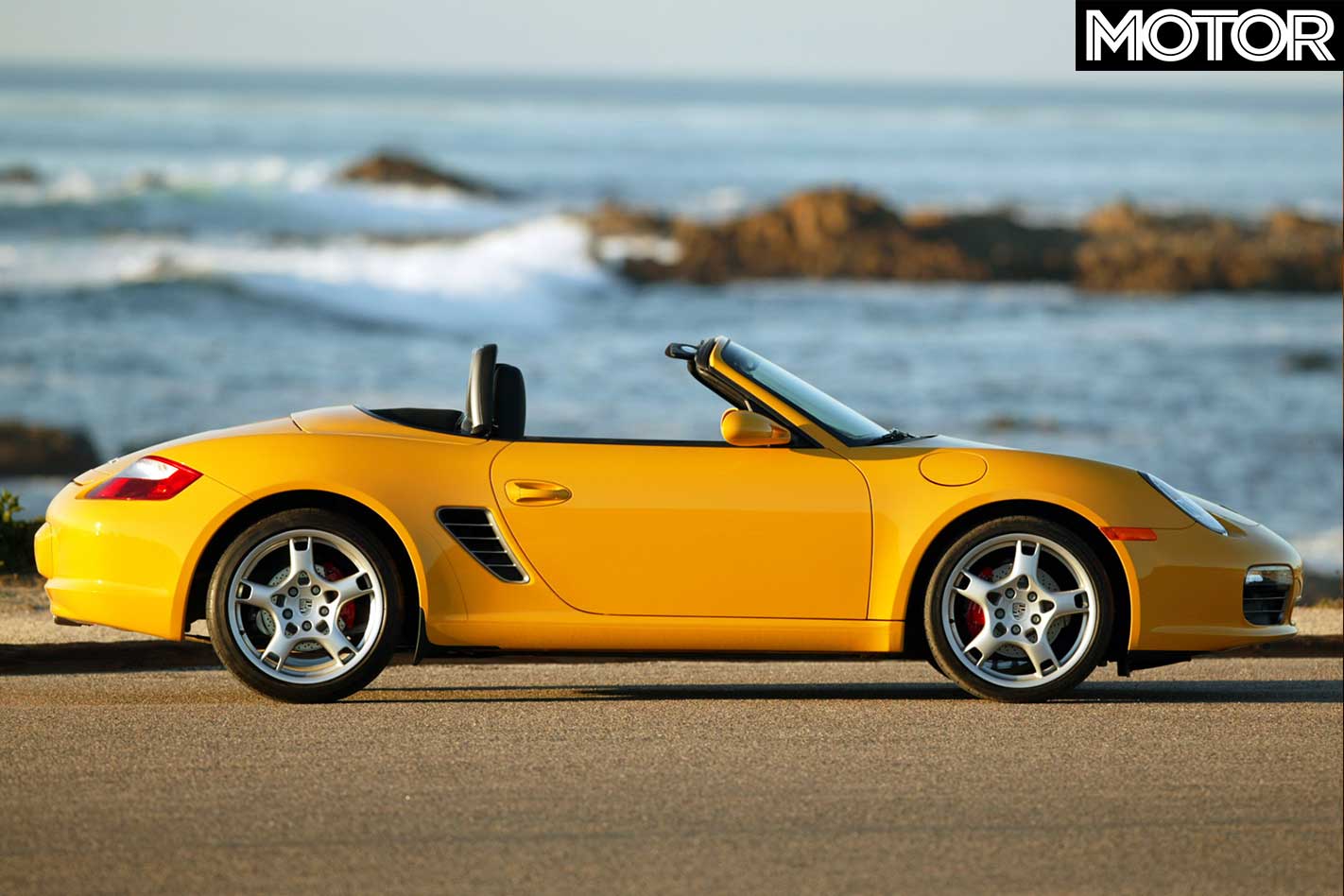
The transition from old to new is not quite as sensational as the step from 996 to 997 911. But the Boxster S has become a better all-rounder and a more complete sports car than the previous model. While Porsche is proud of the sportier character and the more up-market presentation, we were particularly impressed by the blend of smoothness and ability, the mix of balance and performance.
And unless you insist on the stiffest PASM setting and the most extreme tyre size, the mid-engined two-seater will happily suppress the edgy handling and the bone-jarring ride in exchange for a much broader band of competence.
More capable than its predecessor, the new Boxster S is a more pure Porsche and a more desirable roadster. Porsche has succeeded in making the best better. The legendary Gerhard Mitter would have loved it.
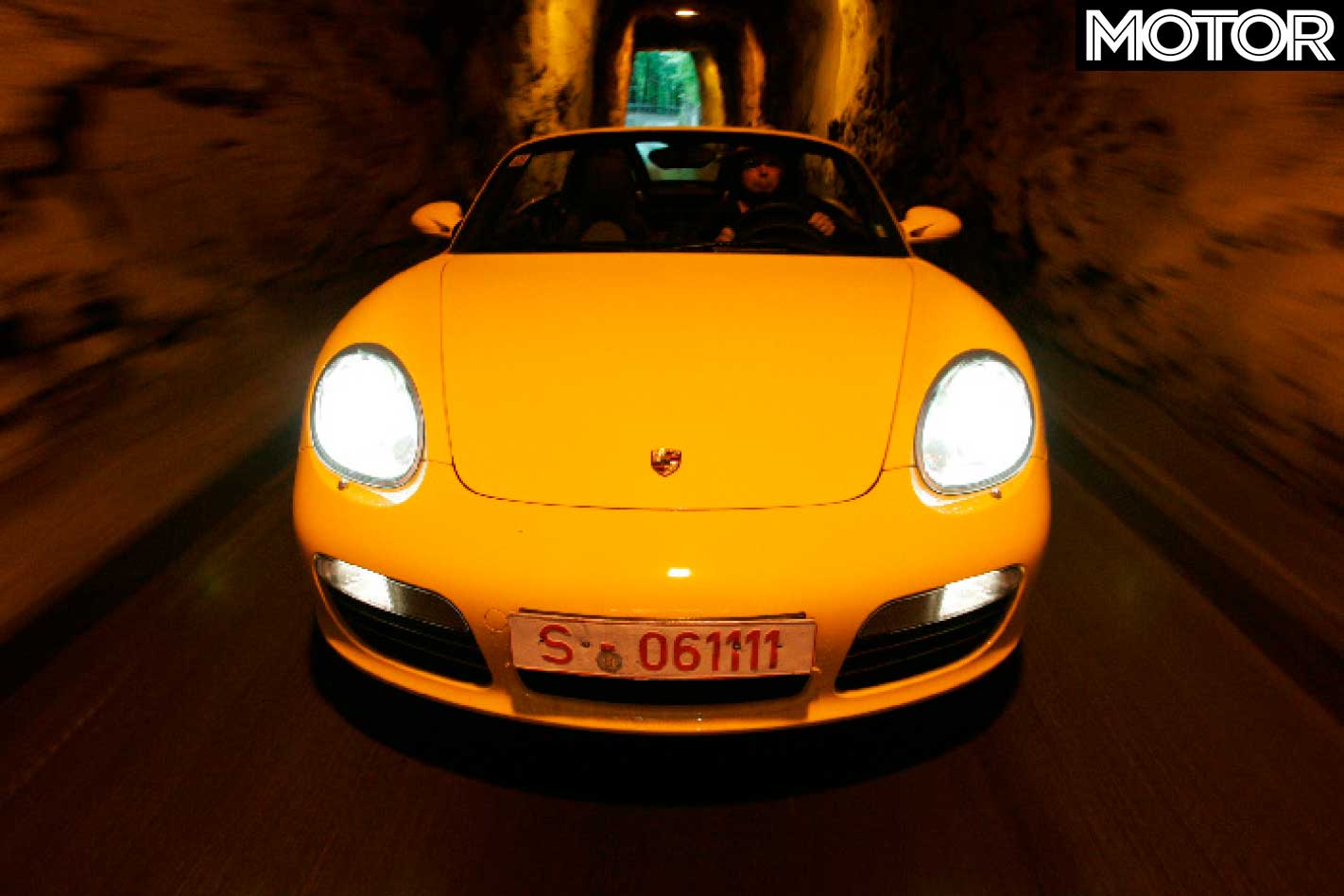
FAST FACTS 2005 Porsche Boxster S
BODY: 2-door roadster DRIVE: rear-wheel ENGINE: 3.2-litre, DOHC 24-valve flat six POWER: 206kW @ 6200rpm TORQUE: 320Nm @ 4700-6000rpm COMPRESSION: 11.0:1 BORE/STROKE: 93.0mm x 78.0mm WEIGHT: 1345kg POWER-TO-WEIGHT: 153kW/tonne TRANSMISSION: six-speed manual SUSPENSION: MacPherson struts, coil springs, anti-roll bar (f & r) L/W/h: 4329/1801/1295mm WHEELBASE: 2415mm TRACK: 1486mm (f); 1528mm (r) BRAKES: 318mm cross-drilled & ventilated discs, four-piston monobloc calipers (f), 299mm cross-drilled & ventilated discs, four-piston monobloc calipers (r); ABS WHEELS: 18 x 9.0-inch (f), 18 x 10-inch (r) TYRES: Michelin Pilot Sport; 235/40ZR18 (f), 265/40ZR18 (r) FUEL: 64 litres, PULP PRICE: $135,000 (est)

